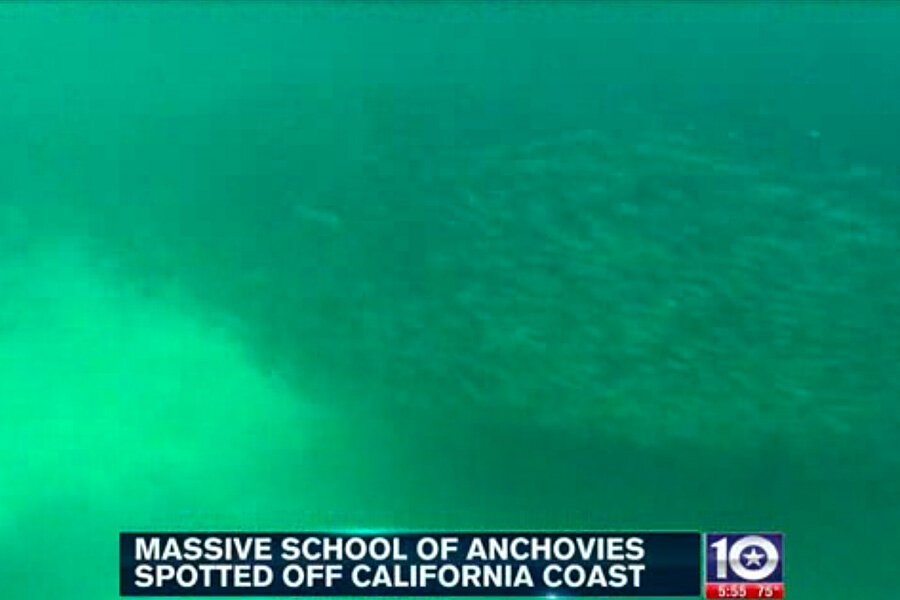Humongous school of anchovies swarmed California coastline
Loading...
Off the coast of San Diego County on Tuesday, a dark cloud in the water caused a stir. From a distance, it looked menacing, but up close it glistened and flowed in shimmering waves.
A vast school of anchovies – enough to top thousands of pizzas – was undulating through the shallow waters along the coastline.
Millions of the tiny fish swam in a school, the likes of which hadn't been seen there for over three decades. This time, the tasty morsels were captured in a spectacular underwater video.
The shadowy band ran along the beach in La Jolla, and right through the pier for the Scripps Institute of Oceanography at University of California at San Diego.
Robert Monroe, a communications officer with Scripps, took full advantage of the moment. When a crowd gathered at the pier to watch the spectacle, Monroe thought there was a red tide. He hurried down to the water with a GoPro camera to capture the phenomenon, only to find a surprise waiting for him.
"It was remarkable. From a distance it looked like an oil slick and you think 'What happened?' and then you get up close and it's amazing ," he told the Los Angeles Times. "It's like watching the motion of a lava lamp."
By the time Mr. Monroe arrived at the pier, three Scripps graduate students were in the water in with the fish. He tossed the camera to the trio, who proceeded to capture underwater video of the school. They also spotted a leopard shark, who was likely attracted by the large buffet.
"Even veteran fisheries oceanographers were amazed ," the Scripps Facebook page says.
The fishy mass was first spotted by lifeguards on Monday, but by Tuesday evening it had dispersed. The school ranged in width from about 50 feet to 330 feet and extended far north of the Scripps Pier.
Researchers have no explanation for this swarm, and "I don't think we'll be able to ferret it out," Phil Hastings, a marine biology professor and curator of the marine vertebrate collection at Scripps told City News Service .
Furthermore, the water was "pretty much the warmest water the species has been reported in" at 74 degrees, said Dr. Hastings.
Why do fish go to school?
Anchovies are just one species of small fish that prefers to travel in synchronized packs. Moving as one makes them appear to potential predators like a larger organism, and they can work as a team to capture larger food too.
Fish in schools also expend less energy swimming long distances. Much like Lance Armstrong drafting behind another cyclist, fish use the current created behind their schoolmates to pull them along more easily.
But how do the fish move so well together? Researchers found a line of sensory cells down the sides of each fish that elevate their awareness of each other. Much like tiny hairs inside human ears, these cells pick up subtle vibrations in the water. By sensing water currents this way, each fish knows of a change in the school's direction.
Markings on their bodies also aid the fish. Anchovies, for instance, have a stripe along the side, which helps their neighbors follow their every move. Many schools break up in the dark of night.
What is an anchovy anyway?
The anchovies off the coast of southern California are called northern anchovies , or Engraulis mordax . They swim in schools near the surface of the Pacific from British Columbia to Baja California.
Anchovies grow to be only seven inches long. On top they are bluish-green, but their bellies are silvery. They reside near the bottom of the food chain, eating plankton, and being eaten by salmon, birds, and many other sea creatures.
Although anchovies around the world have been processed for human meals, the most common snack is the European variety. Northern anchovies, by contrast, are mainly used for bait in fisheries. So the fish seen in this event aren't likely to appear on your next pizza.








